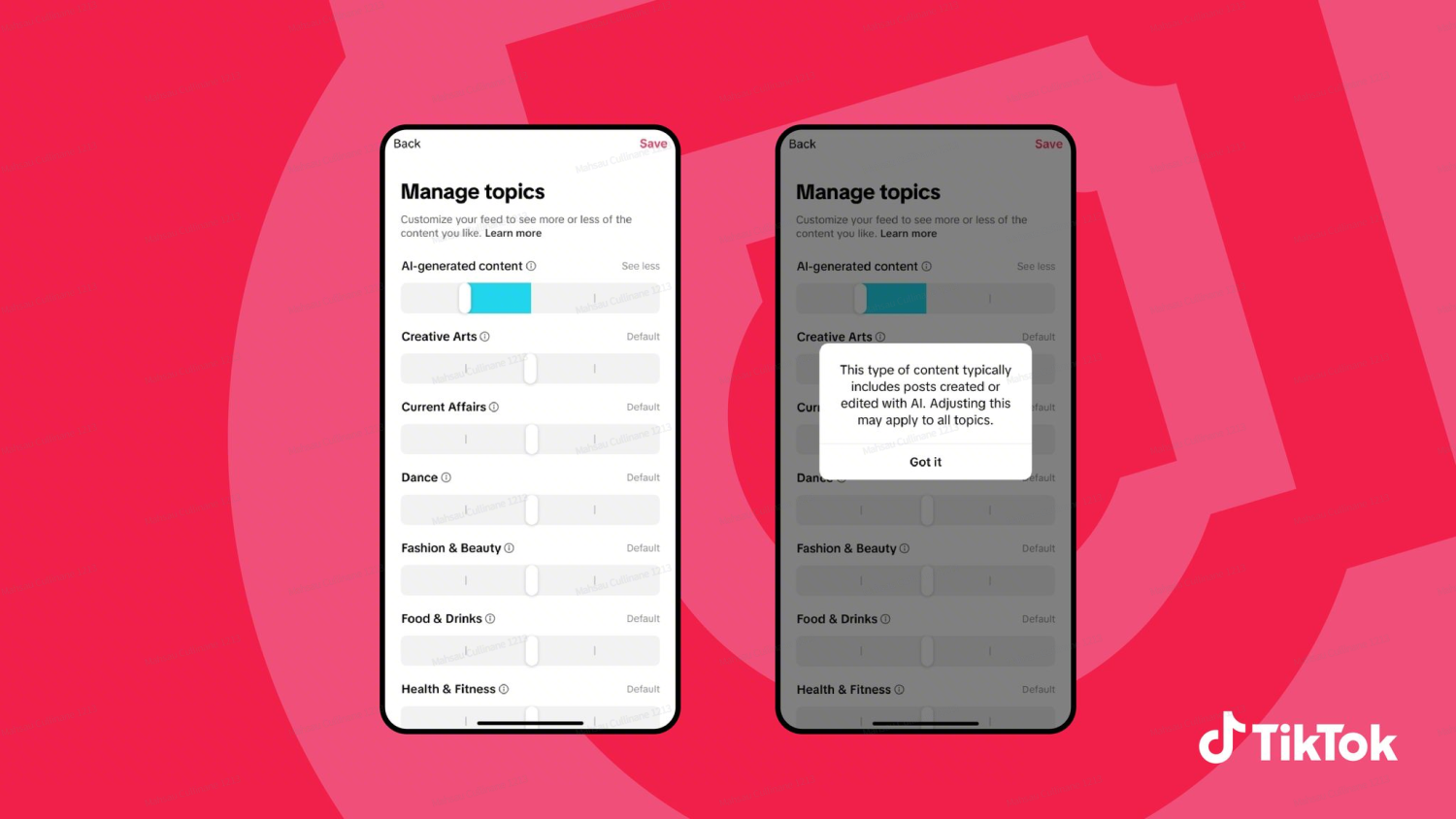TikTok is giving users more control over the rise of AI on their For You feed. The company announced a new setting that lets people choose how much AI-generated content (AIGC) they want to see, from dialing it down to opting into even more of it.
The control lives inside TikTok’s “Manage Topics” tool, the same place where users can already customize how often they see content related to categories like Dance, Sports, or Food & Drinks. Now, “AI-generated content” appears as its own adjustable topic with a simple slider.

According to TikTok, the feature is meant to shape the diversity of the feed, not replace or remove content entirely. And the timing makes sense: platforms like Meta and OpenAI are leaning into AI-only feeds, with Meta launching Vibes in September and OpenAI rolling out Sora, a social platform for creating and sharing AI-generated videos.
Unsurprisingly, TikTok has since seen a surge in hyper-realistic AI content, from historical recreations to celebrity deepfakes to fully synthetic storytelling.
The new control means users who feel overwhelmed by AI can reduce its presence, while those who enjoy the creativity can push the dial the other way.
How to Use It
The setting will roll out across the coming weeks. You’ll find it here:
Settings → Content Preferences → Manage Topics → AI-Generated Content
From there, you simply move the slider to adjust how much AIGC appears in your For You feed.
TikTok is also testing “Invisible Watermarking” for AI content. The platform already requires creators to label realistic AI content and uses C2PA Content Credentials, a cross-industry metadata standard that signals when something was AI-made. But metadata can be stripped if videos are edited or reuploaded elsewhere, making it harder to track AI content reliably.
To fix this, TikTok is experimenting with a new safeguard: an “invisible watermark” that only TikTok can read.
The watermark will be automatically applied to:
- AI-generated content created with TikTok tools like AI Editor Pro
- Content uploaded with C2PA metadata, with TikTok adding its own invisible watermark on top
The idea is simple: even if visible labels or metadata are removed, TikTok can still identify the content as AI-generated and apply the correct disclosures. TikTok says it will continue supporting C2PA’s standard while adding its own watermarking layer to improve reliability across the platform.
As AI-generated content becomes harder to distinguish from reality, and as competing platforms encourage more of it, TikTok is taking a hybrid approach: giving users control over what they see, while building more robust systems to identify synthetic media behind the scenes.
It’s part feed customization, part trust infrastructure, and part acknowledgment that AI isn’t going anywhere… but users should get a say in how much of it they invite into their scroll.
